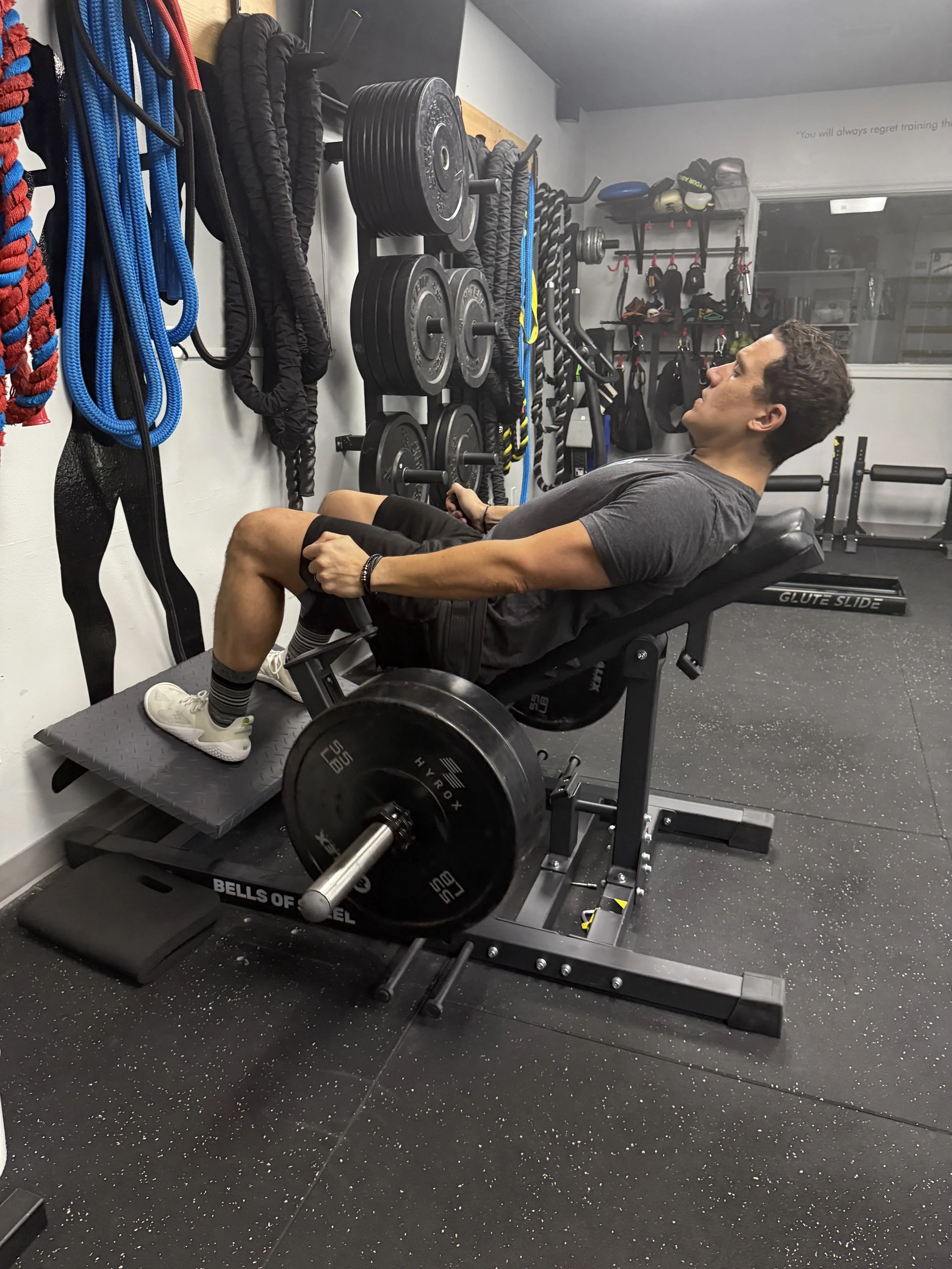Our Approach Forged Over 14 Years
Our Approach: Decoding Human Performance
Stop me if you have heard this before. New Client: I want to get into shape/stronger/lose weight/etc.”
Trainer: “Great. Well let’s bring you in for a short assessment and then we will start
squatting, benching, doing cardio and abs workouts.”
Commence a normal workout split of some combination of HIIT training, lifting weights
and doing cardio and you, the client, has been prescribed a workout program of
arbitrary movements based on 40-year-old assumptions on human biology, with minimal
focus on specificity and mobility, and no long-term planning for human function.
Does this ring any bells?
Now change the client to an athlete and what changes?
Most of the time, some of the content changes but the approach does not. Arbitrary
application of concepts based on inadequate information and done with an assumption
of human biology. That assumption?
Everyone is the same. Training specificity doesn’t matter. Just dose people with
exercise and they will adapt.
There is one BIG problem with that approach. Every human is different. Different needs,
different histories, different bodies. While some rules of human biology are constant,
what drives us toward the adaptations our bodies undergo are individual. How we live,
the choices we make, our genetics all drive our bodies toward making changes at a
physiological level.
We set out to change that approach.
Founded in 2014 in a warehouse with minimal air conditioning and 600sq ft of training
space, Unconventional Strength set out to change the approach to improving human
function and performance. Utilizing a detailed screening method (you can find more
about here), we create individual based training programs that take into account both a
client’s physiology and history. We make no assumptions and instead create training
inputs that are specific to both the client we are working with and their functional needs
(whether that be high level athletics or just keeping up with the kids).
What have the results been?
Over a decade in business.
Thousands trained. Pain decreased. Performances increased. Champions built at every
level. Lives changed.
Who have we worked with?
WWE and AEW Wrestlers
World Champion Golfers
Professional and Collegiate Athletes
Tactical Athletes from all armed service branches to local law enforcement.
TV and Film Actors.
Central Florida Community Leaders.
The wide spectrum of client types who have worked with us have experienced what it is
like to see an approach of training based on individual specificity and with a four part
rule set that helps drive our clients to peak results.
Rule #1: “Do no harm.” You may have heard of this as the hypocritic oath, one
subscribed to by healthcare community. This oath is historically taken by physicians,
and based on the idea that before any decision is made “first, do no harm.” We make
every decision based on weighing the risk reward of prescribing specific exercises to
clients. If the risk far outweighs the reward, we do not prescribe the exercise.
Rule #2: “Functional is specific to a person’s life.” The term functional fitness gets
thrown around a lot in common vernacular. Functional has been pigeonholed by some
training styles as some combination of squatting, deadlifting, pushing and pulling.
Others have described functional training as a symphony of rotational movements
driven by the perceived organization of movement created by the human body in space.
At Unconventional Strength, we prescribe to a different definition of functional. We
define functional training as motions of the body and metabolic systems dictated by a
person’s everyday life. Utilizing our detailed assessment system and experience, we
determine what would be specifically functional to every client for optimal function.
Functional training can change based on the season of life, environment they live or
activities someone participate in.
Rule #3: “Life occurs in 360 degrees, and so should your training.”
Training should reflect the needs of life, as we defined in our definition of functional
training. One of the keys to that is that expressions of force (strength and power) occur
not just forward and backward, up and down but instead occurs in a variety of angles,
variety of positions and training should reflect that. All training should reflect a variety of
angles and positions for force output, dictated by the functional needs of their life. In the
words of Dr. Andreo Spina, “You will 100% regret the ranges you didn’t train.”
Rule #4: “Mobility training is strength training.” Mobility training has been confused as
just a collection of stretching exercises and motions, without load, to create this concept
of “mobility.” In fact, mobility training is about creating strength that results in control. It’s
not just a series of stretches and some fancy dance like movements to get you there.
Instead its about creating flexibility and then training that flexibility to be strong and
useable tissue.
Mobility training has also been confused as just something to do in the warm up when in
actuality, trying to maintain and improve mobility can be the overarching theme of every
session, not just something to improve for 10-15 minutes per session.
While Unconventional Strength was originally born out of an observation that we used
more unconventional tools than traditional tools in our training, the evolution over time
has become an approach that bucks the traditional approach of one size fits all training
and instead puts the client, their history and their biology first. That is who we are at
Unconventional Strength. That is what we do. And what we do is build better moving,
better performing, healthier humans with an evidence based approach.


